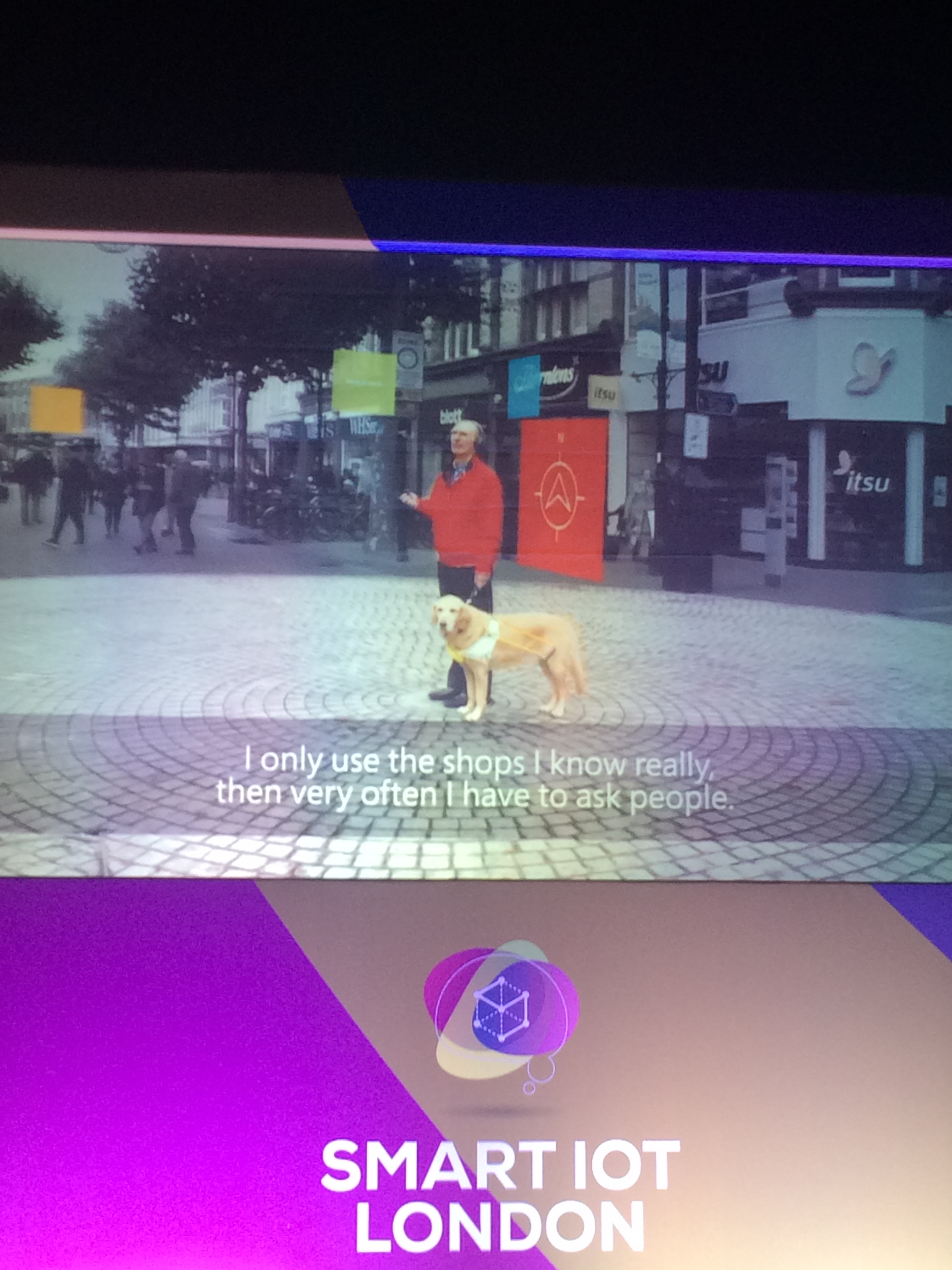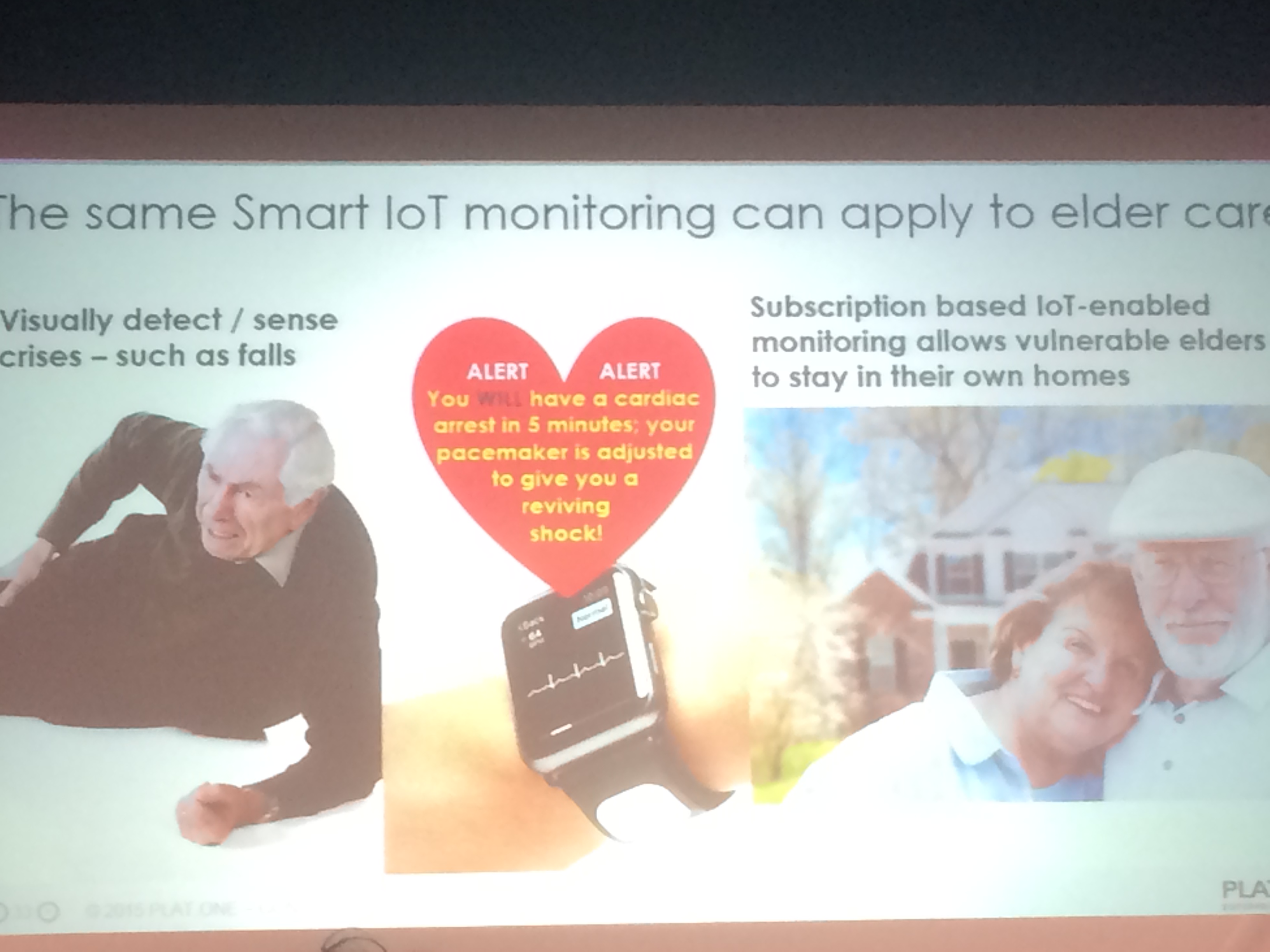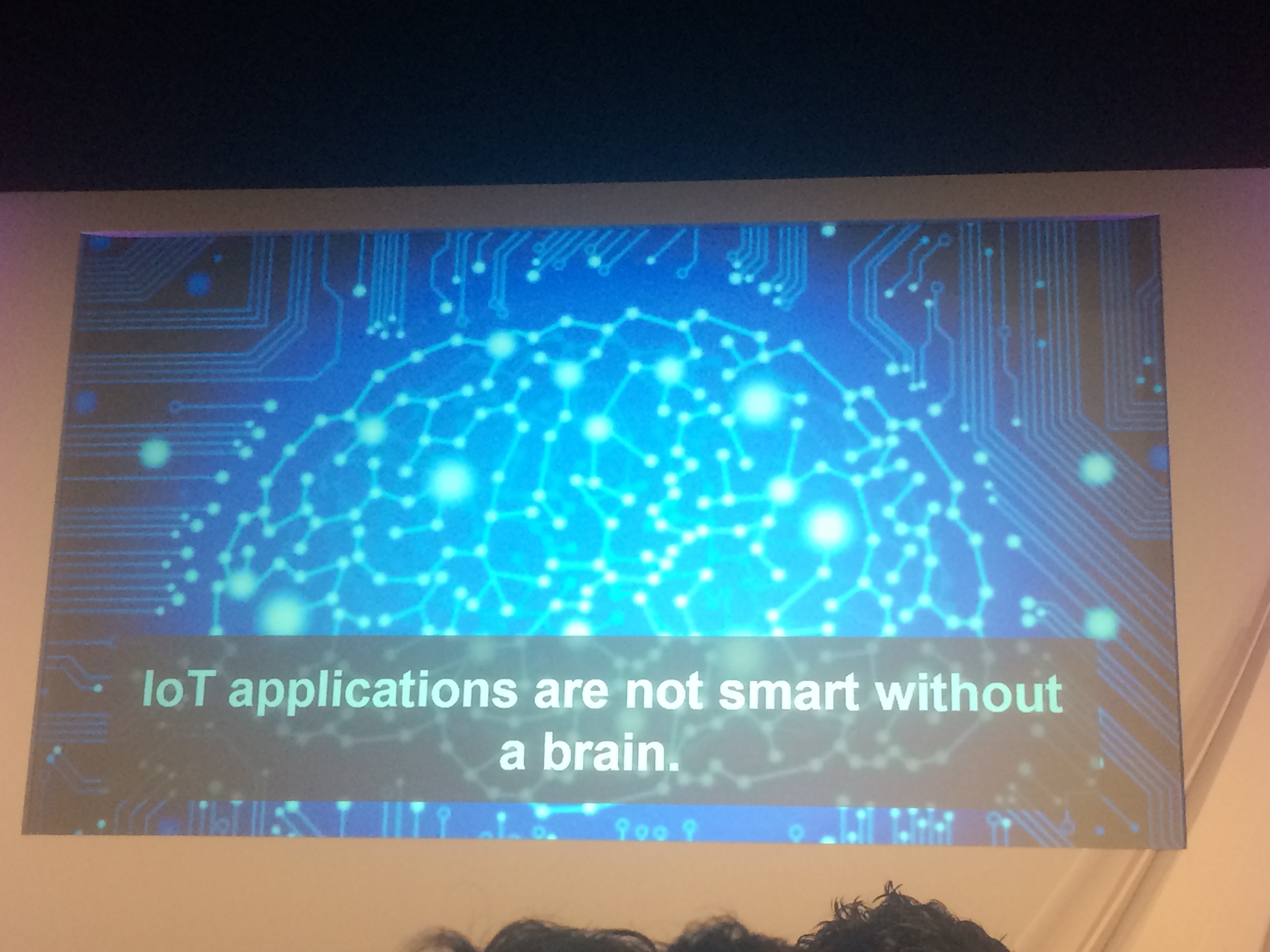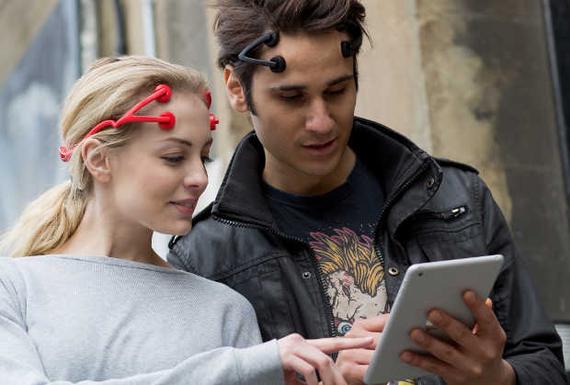Following the Wearable Show that I attended last month in London, it was recommended that I attend the Internet of Things Smart London show. This introduced different and comprehensive forums around IoT and smart cities ranging from future technologies in IoT, business and strategies, Smart connectivity & locations service and smart applications, to big Data & Analytics, and Security of things. It was an invaluable opportunity for me to be inspired about the future of technologies and connected things.
I left the conference with a new knowledge and fresh perspectives about how the latest technologies could be applied to real life situations that I thought would be also applicable in education.
In my previous blog post, I wrote about how wearable technologies are bringing the biggest shift to our behaviors, making us more bonded with our devices and machines. Today we are carrying mobile phones and iPads everywhere, and increasingly we are adding to these with connected watches and glasses.
So what is the internet of things?
As its name suggests it is a limitless list of physical objects, connected through a network/ over wi-fi able to send and receive sensory data through embedded sensor and computing power.
Since 2008, the number of connected sensors to the internet exceeded the number of people on earth, throughout the show I realized that now the internet of things has reached a very exciting stage where it is able to save our lives, detect fraud and make customers more satisfied. Here are some examples of what I see as pioneering applications of IoT that could or already helping to make a difference to people’s quality of life, particularly in education and healthcare.
Assistive IoT technology for visually impaired people:
I was very impressed by the tools developed by Microsoft to empower visually impaired people to face their mobility challenges and difficulties.
Visually impaired people can use a Seeing Artificial intelligence app in their smartphones that function with Pivothead glasses while they are discovering the world around them. The glasses have a camera that transfers visual information into audio cues. In this video, you can see how a visually impaired person is now able to read the expressions of people around him, read what is in any restaurant’s menu using the Seeing AI app.
[youtube https://www.youtube.com/watch?v=R2mC-NUAmMk]
After this session by Microsoft, I realized more that the opportunities of IoT could be enormous in bringing together people, processes, data, and objects to make networked connection more valuable than before. It is incredible that we are now able to use Artificial Intelligence to interpret our emotions, passing it on to those who cannot see it and make them understand it.
Microsoft is using Cognitive services which is a collection of APIs that “allows the system to see, hear, speak, understand and interpret our needs using natural methods of communication”. If ever visually impaired students would be more motivated to engage in a collaborative discussion or activity, being able to read their colleagues’ facial expression and feedback throughout the discussion using such smart AI apps would certainly enable them to overcome many communication difficulties and make them feel equal in the conversation.
Wearable, devices and apps are good, but not enough!
Machine learning and Big Data are the giant leap forward in the IoT world. We have all seen that real things could become smart with more sensors and actuators connected to networks enabling sending and receiving that could be monitored remotely. However, in my view IoT applications can facilitate more personalized learning, able to glean deeper insight to us as individuals, using this knowledge to tailor our unique demands and needs.
In all of the talks I attended, machine learning and artificial intelligence was central and key. As the number of different types of IoT devices on the market is continuously growing, their variety leads to a higher and higher level of complexity in the IoT ecosystem, I believe AI and machine learning will be an essential component to achieve mainstream ubiquity through increased efficiency and productivity at enormous scale.
John Bates, the CEO of PLAT.ONE uses the example of Uber in his talk Thinglaytics and thignanomics: Disruptive IOT Business as a model that could be applied to other services to achieve real-time dynamic and cost-effective market. This is what John called it “Uberization”. Let’s say that we could have smart parking using smart traffic monitoring gate where the charge could be changed based on demand and traffic flow in the city!
The healthcare system could also use the same model interestingly to drastically improve its myriad of systems and save lives. Hospitals could be enabled to provide a level of care previously unimagined while reducing healthcare costs by “continuously analyzing locations, vital signs, drugs administrated, room sensors and many other knots and personalizing them to the medical situation” as John said.
Applications of IoT’s in healthcare could be really revolutionary, it could allow elders to stay in their homes and keep them from making unnecessary trips to the hospital. It is amazing if we could have a subscription based IoT-enabled monitoring at home that could give insights about elders’ daily activities at their homes. With the costs of sensors continue to drop down, and the technologies become more and more viable, the more monitoring devices will be an integral part of the patient’s daily life.
If data about our body and how it works could be streamed and analyzed continuously, doctors could be able to get alerts when you are likely to suffer a massive heart attack based on our heart rate, blood pressure and temperature. Surely, this would lead to get a better quality of life?
Big Data and Streaming Analytics:
With the increasing use of sensors and the massive amount of data generated every second about everyone’s life and activity, Mike Gualtier considered machine learning to be the brain for any IoT, but what he sees is also very powerful to achieve personalization is big data and streaming analytics which become mature enough to be used in any enterprise.

One of the projects Jisc is pioneering is learning analytics which will have already consume big data sets and streaming statistical inputs from students and institutions. If we could have an infrastructure that enables real time analytics, we would have so many big data analytics opportunities that will help in supporting each student’s individualised/ personalised learning. Connected classrooms could be the future with smart IoT where students and teachers will be able to communicate across countries, get access to materials tailored to their needs that might be used in other schools or even districts.
Mike suggested that “enterprises must act on a range of perishable insights to get value from IoT data”. If using that we could envision how educational institutions could have timely insight and interventions to overcome challenges they are facing with the student experience.
IoT and gamification:
This is true personalized learning experience achieved at scale and only made possible by AI integrated with a gamifieid tool to change people’s behaviors. The smart Kolibrees’ multi-faceted software is used to educate children through a game about the how to brush their teeth and was able to transform the way they do it .
The game has 3D motion sensors to track movements of brushing behaviours which are tracked and checked by parents to see how well children have brushed.
The more data the system have on children’s brushing habits, the more reliable and accurate the software is. The game’s reward system encourages children to improve their habits based on gamification principles.
what is powerful about this is that brushing data obtained is made available via an open API to feed to third party game designers who is able to develop new apps and add more fun components to further enhance brushing time.
In schools, the potential of gamified IoT is great is in maximising engagement while enabling real-time interaction and feedback that help shape user’s behaviour and deliver emotional rewards that encourage on-going engagement.
Let’s say we could use Neurosensors in schools during particular activities to provide insight into students’ cognitive activity using EEG technology that measures brain activity. This would allow teachers to dedicate more attention to students who need it not just for those who ask for support.

Focus headband used for gamers uses trace amount of electrical current to stimulate the prefrontal cortex, producing positive short-term effect in playing ability by Foc.us Labs
Furthermore, with AI, gamification elements could be personalised depending on how the student is motivated to enhance deep understanding of difficult concepts and have fun learning about it at the same time.
Considerations to bear in mind: IoT security and privacy and data protection:
Discussions about security and privacy issues was prevalent in the show and this is very necessary I suppose. with more devices become connected to different objects in our houses, bodies and workplace, IoT security becomes more complex.
I totally agree that when using and adopting IoT in different areas such as healthcare and education, there are a lot of issues to to do with privacy and data protection and information security that if not considered properly could raise questions to confidentiality, integrity and availability of information.
However, to some, it is also fear of new technologies that is not new. Fear of using new tech always exists. We all were frightened to submit our credit card information while now it is something we do not really think about as much.
I think it is important that we understand that it is not the technology that increases risks for privacy, security and data protection, however, it is the way it is used and applied.
To deal with these challenges, i believe in building trust in our digital world that could make us more confident when adopting and using new technologies.
- A lot of information about data protection principles and privacy policies need to be stated clearly and translated to the end user. For example, the purpose of processing personal data and how it is processed need to be identified for the owner of the data.
- Designers of IoT can do a lot if they keep in mind security issues earlier in the development and design stage of any IoT project.
- If we need to achieve that, we also need to empower people through involving them in making decisions about who owns the data and have control over it, how the data is shared and with which party, what elements to connect, and how to interact with other digital users and technology providers. This is what could build transparency and confidence to ensure trust and safety in my point of view. As it is suggested in the event, “eventually nobody is going to own personal data- there’s just going to be permissions and relevant questions”.

